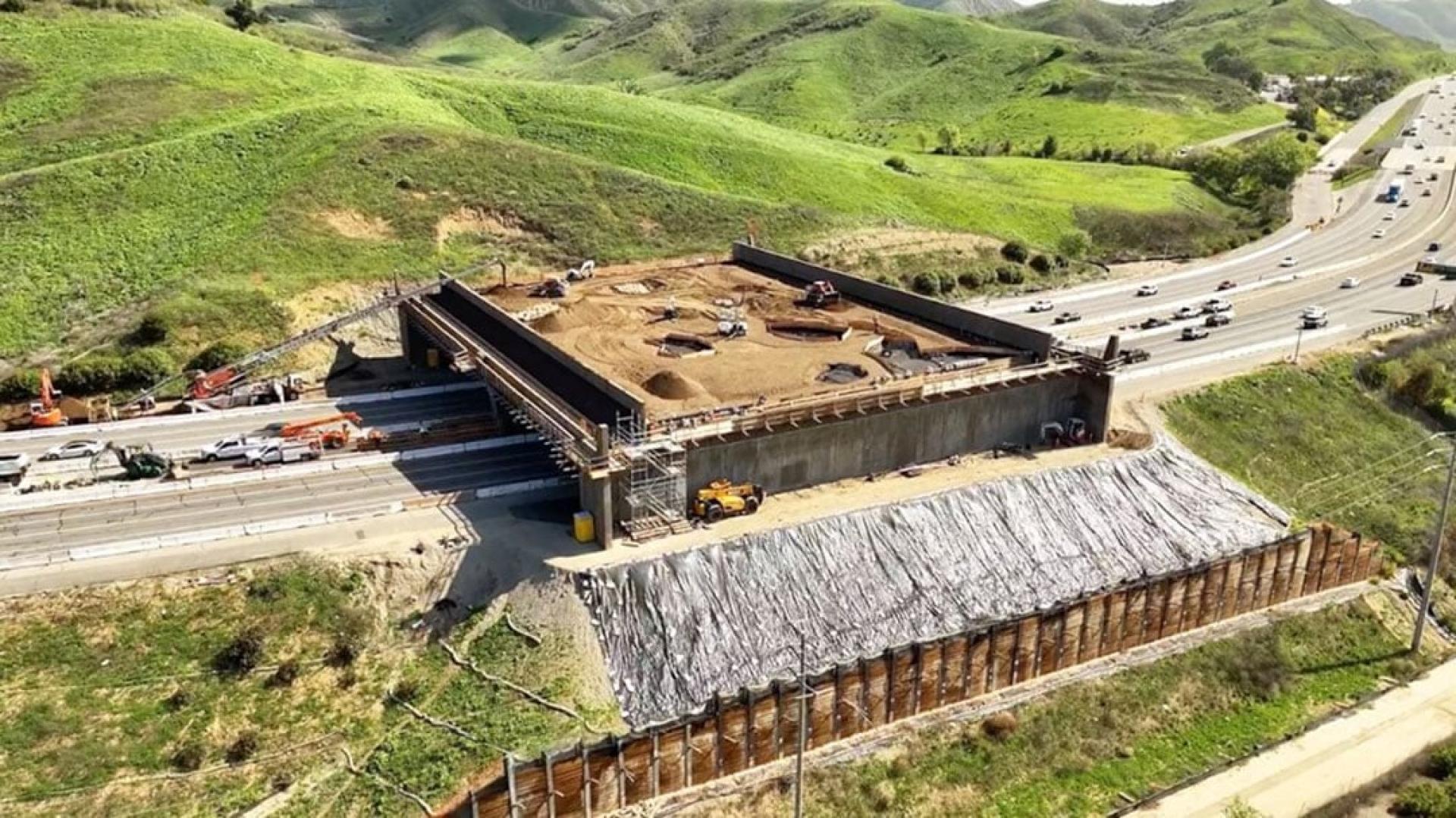The California state government and the private sector have joined forces, spending 92 million USD (388 million Malaysian ringgit) to build the world’s largest wildlife crossing in Los Angeles. Spanning a 10-lane highway, the ecological bridge aims to rescue the endangered cougar population.
According to the Central News Agency, in recent years, there have been frequent reports of cougars entering communities in Los Angeles, including shocking incidents where a 5-year-old boy was dragged into the woods and an 11-year-old girl was attacked in a backyard. The underlying reason, however, is that human development has fragmented their habitats, putting the cougar population at risk of extinction.
The California Department of Transportation and the National Wildlife Federation—the largest wildlife conservation group in the U.S.—have together raised nearly 100 million USD (422 million Malaysian ringgit). Since 2022, the ecological corridor has been under construction, spanning across the 10-lane wide U.S. Highway 101.
This ecological corridor is 64 meters long and 53 meters wide. Currently, it remains a construction site filled with heavy machinery, but is expected to be completed next year. Upon completion, it will become a vital lifeline for the survival and continuation of the cougar population.
This giant bridge, meant solely for animals, is located in Agoura Hills northwest of Los Angeles, situated between the Santa Monica Mountains and the Simi Hills. For many years, Highway 101 has separated the ecosystems of the northern and southern mountains, fragmenting wildlife habitats.
Odehniana, a wildlife biologist at the Los Angeles Natural History Museum, told Central News Agency reporters that cougars are facing extinction, and that the highway has long restricted their home ranges and taken their lives.
Odehniana said that cougars are not social animals—they are strongly territorial and require large ranges to survive. Highway 101 cuts their habitat into north and south, so if they attempt to cross, they risk being killed by vehicles. If they can't cross, they are forced into inbreeding, which also threatens the survival of the group.
One major feature of this bridge is that the structure itself becomes part of the ecosystem. Large earthen berms and planted walls are built around the bridge to reduce noise and light pollution from the highway; the bridge deck is covered with plants sourced from within 8 kilometers—using seeds, soil, and fungi—to connect seamlessly with the local environment.
The official name of this bridge is the “Wallis Annenberg Wildlife Crossing,” named after and initially funded by the Annenberg Foundation. It is expected to be completed by the end of 2026, and when finished, it will benefit not only cougars but also bobcats, deer, bats, birds, and dozens of other wildlife species.
